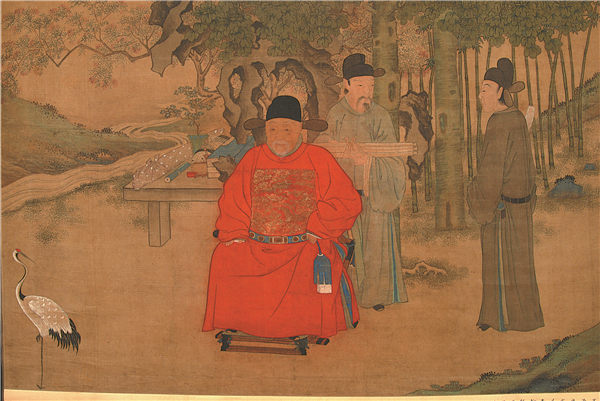

The earliest known examples of Chinese portraiture include two silk paintings unearthed in separate tombs from the Warring States Period (475-221 BC). They depict the side profile of a man riding a dragon and a woman with a phoenix and a dragon. The two works were created for a funeral and were held up in front of the subjects' coffins. They were meant to bring comfort to the deceased, and accompany them into the afterlife.
The Tang (618-907) and Song (960-1279) dynasties witnessed a boom in art, including the birth of great figure paintings and painters specializing in the genre.
And yet, it was not until the beginning of the Ming Dynasty that portraiture, previously confined to royal circles, and high-ranking officials, gradually became popular among government officials of lower ranks, landlords and businessmen and their families.
"Portraiture reached a peak during the Tang Dynasty, when painters achieved excellence in lifelike profiles and were able to reveal the temperament and mentality of their subjects. The standards and formats being established continued into the Song and Yuan (1271-1368) dynasties," says Gong Liang, director of the Nanjing Museum.
He says flourishing commerce during the Ming and Qing dynasties gave rise to a growing population of well-off citizens and a rising demand for arts and culture, including placing orders from professional portrait painters.
Prompting this wave of figure paintings were a group of prominent artists, including Zeng Jing, Yu Zhiding and Xu Zhang whose works are on show.